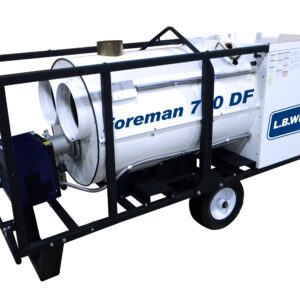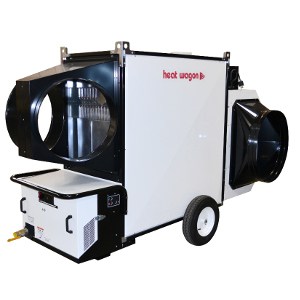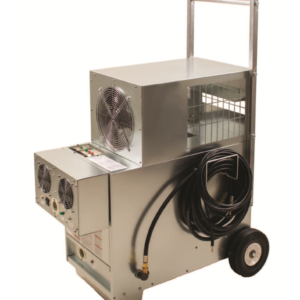One of the most often-asked questions we receive is “what temperature is required to kill bed bugs?” typically followed by “how long should I hold my treatment at the “kill” temperature?” We will address both by providing a combination of widely-published university studies and real-world experience, to accommodate for unique structures and situations.
Published Research On Lethal Temperatures Required to Kill Bed Bugs
The following table considers a variety of studies from entomologists on thermal inactivation, or “kill temperatures” for bed bug adults, nymphs, and eggs. Please note that these are direct exposure temperatures.
| Type | Temperature | Duration | Reference |
|---|---|---|---|
| Bed Bug Eggs | 45°C/113°F | 60 mins | Gulmahamad, 2002 |
| Bed Bug Eggs | 47.77°C/118°F | 90 mins | Miller, 2015 |
| Bed Bug Eggs | 45°C/113°F | 420 mins | Kells/Goblirsch, 2011 |
| Bed Bug Eggs | 48.3°C/119°F | 71 mins | Kells/Goblirsch, 2011 |
| BB Adults and Nymphs | 45°C/113°F | 15 mins | Mallis, 2004 |
| BB Adults and Nymphs | 48°C/118°F | 20 mins | Miller, 2015 |
| BB Adults and Nymphs | 45°C/113°F | 95 mins | Kells/Goblirsch, 2011 |
| BB Adults and Nymphs | 54.8°C/130.6°F | 0-1 min | Kells/Goblirsch, 2011 |
Bed bug eggs require four to six times more exposure than adults and nymphs for inactivation. Also note the differences in time to achieve inactivation when the temperature is increased in the Kells/Goblirsch study. A simple increase of six degrees Fahrenheit resulted in a reduction from 420 minutes to 71 minutes to achieve lethality. Similar results were found when exposing the adults and nymphs to a slightly higher temperature.
Field Considerations
Now that we know exposure temperature required to kill bed bugs, we can use this knowledge in field applications.
When the application for bed bug treatment is with controlled heat, you must ensure that bed bugs are exposed directly to these temperatures. Keep in mind that bed bugs are typically hiding in cracks and crevices, behind walls, in furniture, etc. If a room is 120 degrees Fahrenheit, that doesn’t mean that the aforementioned areas are also 120 degrees. It will take time for the heat to transfer through a wall or through a cushion.

There could easily be discrepancies of 40 degrees Fahrenheit from the air space to the wall. To illustrate this point, below is a picture of a sensor probe inserted underneath the baseboard of an exterior wall during a heat treatment. The space temperature at the time was 134.6 degrees F, and note the sensor readout of 102.2 degrees F (Figure 1). The baseboard temperature would have been insufficient to kill bed bugs or their eggs. If using temperature guidance from the charts, one could mistakenly assume the heat treatment is done.
Importance of knowing
Understanding these discrepancies, the individual or team conducting heat treatments should incorporate a “hold” time to ensure that heat has time to penetrate all areas throughout the structure, in order to achieve 100% mortality.
There are ways to accomplish more uniform temperatures in a treatment. Adding more air movers to a treatment will help drive heated air into cracks and crevices, and expose a higher percentage of surfaces to lethal temperatures in less time. Indirect-fired forced air systems can help drive air into wall cavities via positive pressure, and heaters like the Sleeptight 800 Indoor Propane Heater can speed heat transfer through walls by increasing the humidity. This is a more complex topic to explain related to physics and thermodynamics.
To demonstrate the importance of air movers, we redirected an air mover to the area reading 102.2 degrees, and took another picture 15 minutes later. As you can see, adding more airflow to the wall increased the temperature 11.8 degrees F, which brought it into the lethal or “kill” zone at 114.0 degrees F (Figure 2). The temperature continued to climb above 120 degrees F, which was held for over 2 hours.

Guidance on Treatment Times
There is no perfect time and hold ratio due to the variables of structures, content, weather conditions, and many other affecting factors one may face in a heat treatment. Our general guidelines for space temperatures are as follows:
120 degrees F at 8 hours
125 degrees F at 6 hours
130 degrees F at 4 hours
135 degrees F at 3 hours
140 degrees F at 2 hours
Please note that this assumes airflow running across all surfaces via air movers, manipulation of contents to eliminate cold spots, and standard frame construction. In heavy infestations, cold weather, basements, and clutter, we would recommend extending treatment times. Using sensing devices with probes will provide a more accurate assessment of temperatures in areas where bed bugs typically harbor. For more information and tips on a successful treatment visit here.
For any further guidance or questions pertaining to heat treatments, please feel free to reach out to one of our experienced and knowledgeable Thermal Flow members at 833-401-3569(FLOW).



